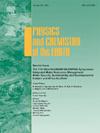脆弱和资源稀缺环境下腰果农林业应用的实证研究——以冈比亚西海岸地区小农为例
IF 3
3区 地球科学
Q2 GEOSCIENCES, MULTIDISCIPLINARY
引用次数: 0
摘要
了解腰果农林复合经营的盈利能力、可接受性、可行性和相关因素对于增强低收入小农的权能至关重要。它支持他们的经济生存、减少风险和采用可持续农业做法。本研究探讨了在脆弱、资源稀缺的环境中,采用腰果农林复合是否对小农来说是一种安全可靠的选择,以提高土壤肥力,减少退化,改善土地整体健康,促进可持续农业和环境保护。通过一项调查,从冈比亚东部Kombo的20个小农那里收集了数据。结果表明腰果农林业利润高于其他作物。一个1公顷的腰果农场,在降雨不足和收获期间损失40%的情况下,以20%折现的净现值为1,030.45美元,成本效益比为2.93,内部回报率为47.2%。一半以上的农民扩大了他们的农场,其中70%是为了增加收入和改善土壤。他们采用多种腰果农林复合系统。研究表明,腰果农林复合是小农的可靠选择,特别是那些土地有限的小农,可以增加收入并改善土壤条件。影响采用的关键因素包括农场扩张能力、土地可用性、降雨变率、性别、木柴和木炭需求、防风林和侵蚀控制以及腰果的盈利能力。这些发现为政策制定者在冈比亚推广基于树木的农林业和类似的小农提供了有价值的见解,因为它在经济上具有吸引力,减少了劳动力需求,并且比单一作物系统的风险更低。本文章由计算机程序翻译,如有差异,请以英文原文为准。

Empirical study on cashew agroforestry adoption in a fragile and resource-scarce environment: The case of smallholder farmers in the west coast region of the Gambia
Understanding the profitability, acceptability, feasibility, and associated factors of cashews agroforestry is crucial for empowering low-income smallholder farmers. It supports their economic survival, risk reduction, and adoption of sustainable agriculture practices. This study examines whether cashews agroforestry adoption is a safe and reliable choice for smallholder farmers in a fragile, resource-scarce environment to enhance soil fertility, reduce degradation and improve overall land health for sustainable agriculture and environmental conservation. Data were collected from 20 smallholder farmers in Kombo East, The Gambia, via a survey. Results showed cashews agroforestry profits were higher than other crops. A 1-ha cashews farm has a net present value of USD1,030.45 when discounted at 20 %, with a cost-benefit ratio of 2.93 and an internal rate of return at 47.2 %, despite poor rainfall and 40 % loss during harvesting. More than half of the farmers expanded their farms, with 70 % motivated by income generation and soil improvement. They adopted multiple cashews agroforestry systems. The study reveals cashew agroforestry as a reliable option for smallholder farmers, especially those with limited land, enhancing earnings and improving soil conditions. Key factors influencing adoption include farm expansion ability, land availability, rainfall variability, gender, firewood and charcoal needs, windbreak and erosion control, and cashews profitability. These findings offer valuable insights for policymakers to promote tree-based agroforestry in The Gambia and for comparable smallholder farmers, as it is financially appealing, reduces labour demands, and presents lower risk than monocropping systems.
求助全文
通过发布文献求助,成功后即可免费获取论文全文。
去求助
来源期刊

Physics and Chemistry of the Earth
地学-地球科学综合
CiteScore
5.40
自引率
2.70%
发文量
176
审稿时长
31.6 weeks
期刊介绍:
Physics and Chemistry of the Earth is an international interdisciplinary journal for the rapid publication of collections of refereed communications in separate thematic issues, either stemming from scientific meetings, or, especially compiled for the occasion. There is no restriction on the length of articles published in the journal. Physics and Chemistry of the Earth incorporates the separate Parts A, B and C which existed until the end of 2001.
Please note: the Editors are unable to consider submissions that are not invited or linked to a thematic issue. Please do not submit unsolicited papers.
The journal covers the following subject areas:
-Solid Earth and Geodesy:
(geology, geochemistry, tectonophysics, seismology, volcanology, palaeomagnetism and rock magnetism, electromagnetism and potential fields, marine and environmental geosciences as well as geodesy).
-Hydrology, Oceans and Atmosphere:
(hydrology and water resources research, engineering and management, oceanography and oceanic chemistry, shelf, sea, lake and river sciences, meteorology and atmospheric sciences incl. chemistry as well as climatology and glaciology).
-Solar-Terrestrial and Planetary Science:
(solar, heliospheric and solar-planetary sciences, geology, geophysics and atmospheric sciences of planets, satellites and small bodies as well as cosmochemistry and exobiology).
 求助内容:
求助内容: 应助结果提醒方式:
应助结果提醒方式:


